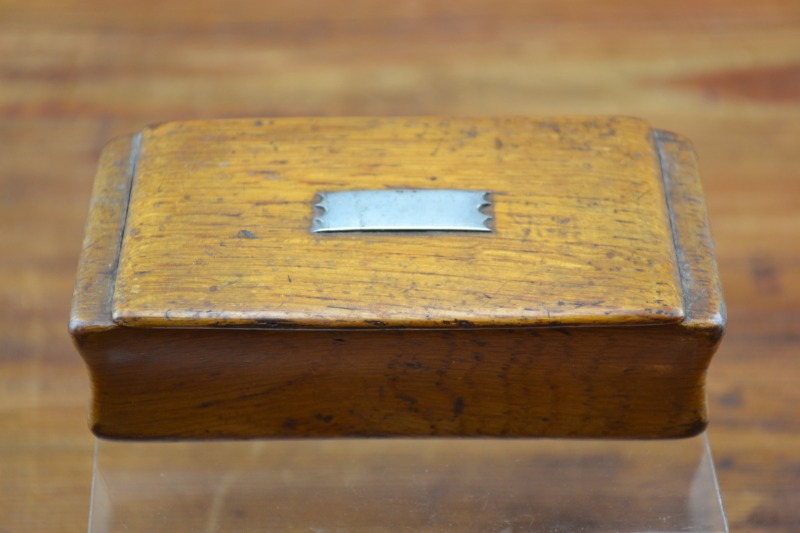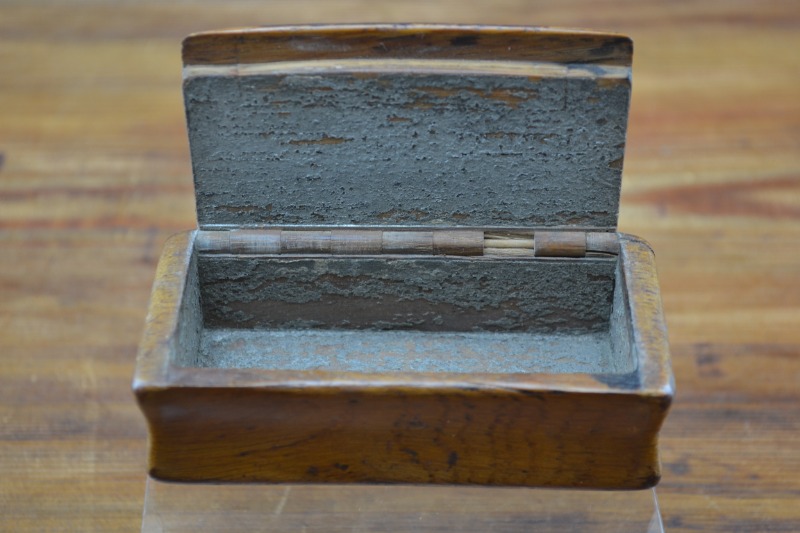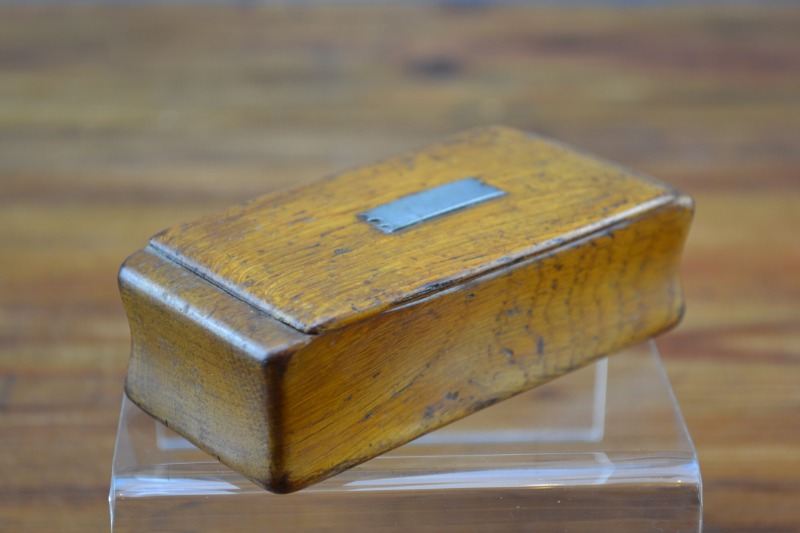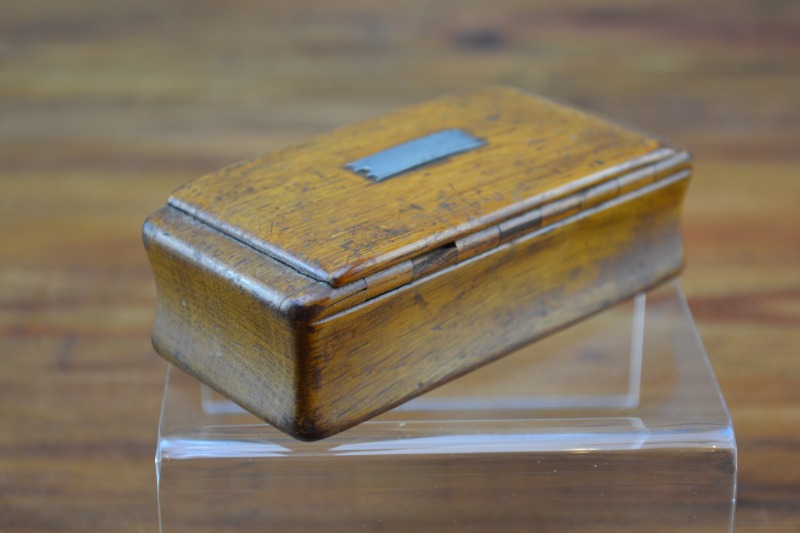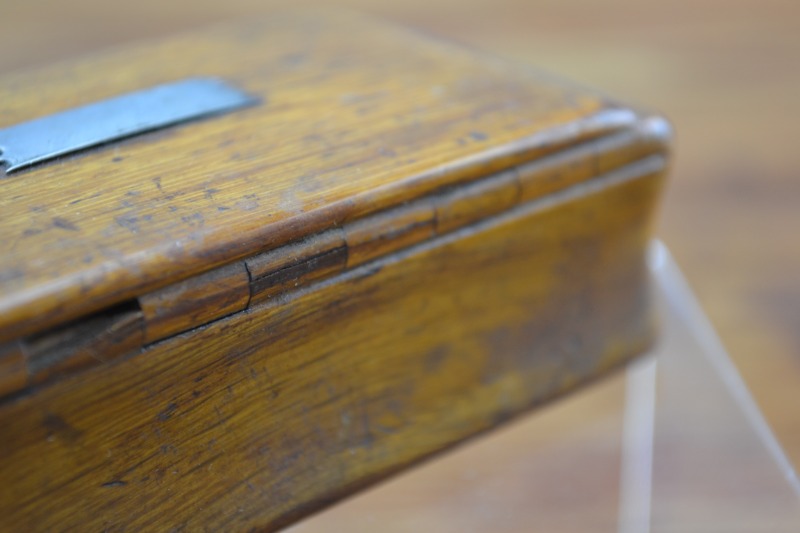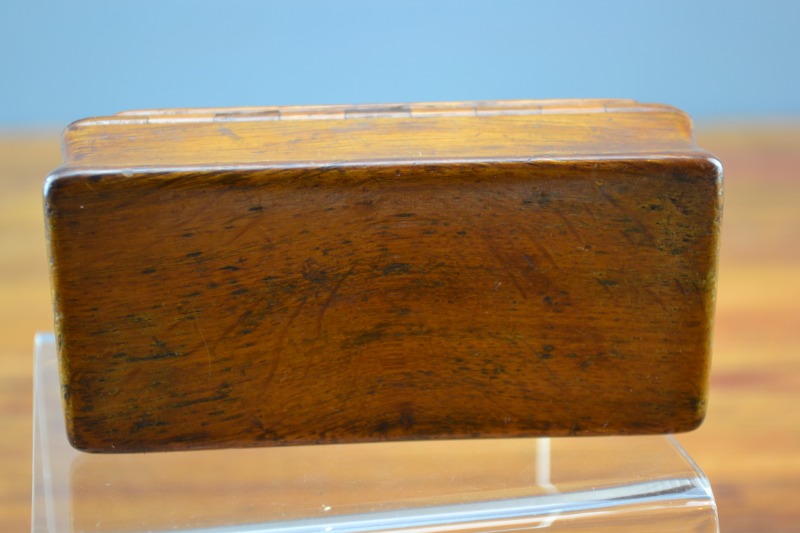19th Century Beech Snuff Box With Silver Cartouche, Waisted Sides and Hidden Hinge, Circa 1820
Age:
Early 20th Century, C 1820
Material:
Beech
Dimensions:
10cm x 5cm
Shipping:
Standard Parcel
Price:
SOLD
A beech snuff box of good size, with waisted sides and stepped lid. The top bears a silver cartouche and is supported by a “hidden hinge”. The insides show the remains of the lead paper.

